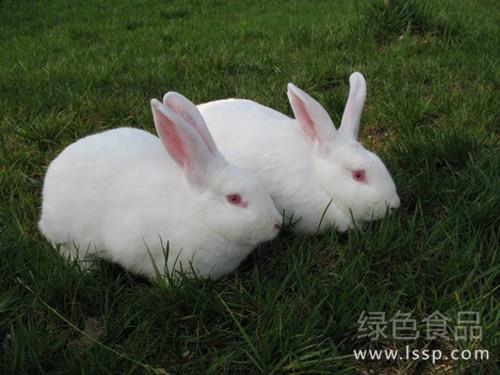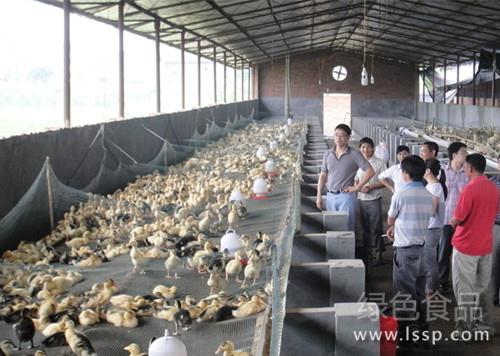Prevention and treatment of mucinous enteritis in rabbits with abdominal enlargement and drooling fecal tape
Rabbit mucinous enteritis is one of the rabbit intestinal infectious diseases caused by certain serotype Escherichia coli, which is characterized by abdominal enlargement, fecal mucus or watery, salivation, high morbidity and mortality. Rabbit mucinous enteritis is closely related to feeding and management, especially improper feeding, which affects the normal intestinal microflora of rabbits and makes non-intestinal pathogenic Escherichia coli multiply and produce toxins. The disease has no obvious seasonality and can occur in both male and female rabbits. The incidence of the disease is high in young rabbits aged from 1 to 4 months.

Rabbit
1. Clinical symptoms:
The incubation period was 632 hours. The most acute type: there is often no clinical manifestation, and a few hours after the onset, he falls to the ground and dies. Acute type: elevated body temperature, depressed spirit, loss of appetite or cessation of appetite, breathing slightly faster, abdominal dilatation, auscultation intestinal tinnitus, feces dry and sparse, and died within 1-2 days. Subacute: the course of disease is 7-5 days, and the symptoms are typical. In the early stage of the course of the disease, in addition to acute symptoms, feces are grape-shaped and stained with gelatin-like mucus, or yellow to brown watery dung, turbid urine. In the middle of the course of the disease, the body temperature is gradually normal, conjunctival pallor, rough coat, no stool or fishy smell of feces, mucus and thin feces pollute the anus and hind limbs, and the urine is rice soup-like, pink and fishy. In the later stage of the course of the disease, the body temperature is low, the limbs are cold, the mouth is drooling, the feces are black, roll and scream, the head and neck lean back, the hind limbs are stiff, and eventually die of dehydration and exhaustion.
Second, prevention and control measures:
Strengthen feed management and mix feed reasonably. When changing the feed, it must be carried out step by step, not abruptly; do a good job in environmental hygiene at ordinary times, and disinfect the rabbit breeding places and utensils regularly. Once the disease is found, immediately isolate and treat, strictly disinfect the contaminated rabbit cages and appliances, and urgently inoculate the corresponding (such as the isolated) Escherichia coli alumina formaldehyde vaccine.
In drug treatment, suitable antimicrobials such as gentamicin and streptomycin can be selected. When possible, it is best to conduct a drug sensitivity test. For example, streptomycin is injected intramuscularly 20 mg / kg body weight twice a day for 3-5 days, and sulfadiazine is taken orally 15 mg / kg body weight twice a day for 2-3 days, combined with symptomatic treatment such as astringent antidiarrhoea, rehydration, cardiotonic and diuretics to prevent dehydration in rabbits. If young rabbits can be inoculated with anti-Escherichia coli serum which is dominant in rabbit farm, it has better prevention and control effect.
- Prev

Distension of stomach and intestine in fox
The main results are as follows: (1) the clinical symptoms of the disease mostly occur in summer, especially in the period of separation from the breast. The belly circumference of the affected animal is enlarged, the drum sound is tapped, the pressure is elastic, the touch has a large amount of gas, and the hand pressure shows dyspnea; the affected animal has a straight neck and lies in a small room or cage. If the treatment is not timely, more because of heart weakness, asphyxia and death. (2) first of all, the causes of distension must be eliminated and the process of gas production by fermentation in the gastrointestinal tract must be reduced. Oral 5% lactic acid solution (or edible vinegar) 3: 5
- Next

The key points of management techniques for keeping ducks in captivity can save labor.
The key points of management techniques for keeping ducks in captivity can save labor.
Related
- On the eggshell is a badge full of pride. British Poultry Egg Market and Consumer observation
- British study: 72% of Britons are willing to buy native eggs raised by insects
- Guidelines for friendly egg production revised the increase of space in chicken sheds can not be forced to change feathers and lay eggs.
- Risk of delay in customs clearance Australia suspends lobster exports to China
- Pig semen-the Vector of virus Transmission (4)
- Pig semen-the Vector of virus Transmission (3)
- Five common causes of difficult control of classical swine fever in clinic and their countermeasures
- Foot-and-mouth disease is the most effective way to prevent it!
- PED is the number one killer of piglets and has to be guarded against in autumn and winter.
- What is "yellow fat pig"? Have you ever heard the pig collector talk about "yellow fat pig"?

